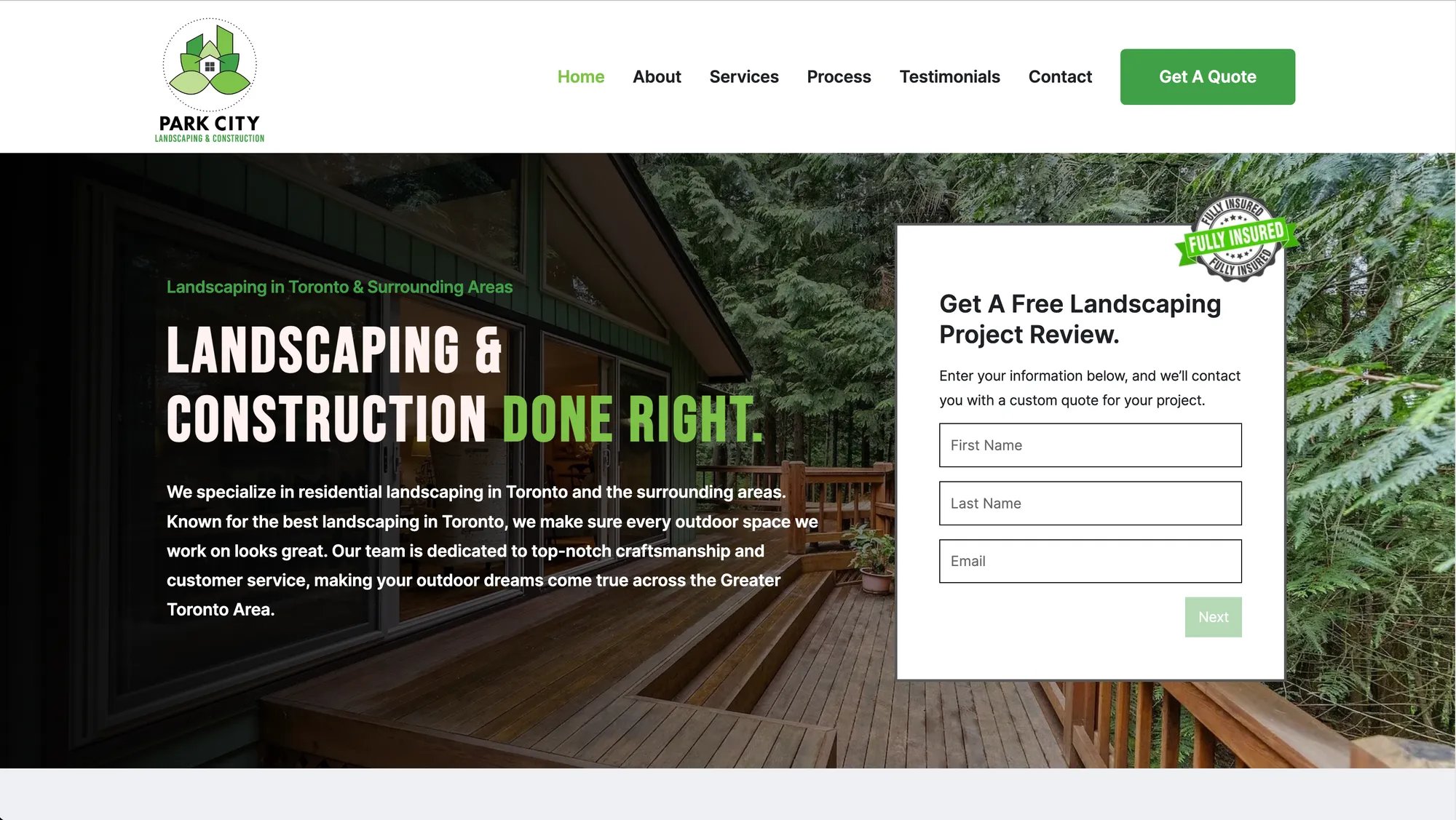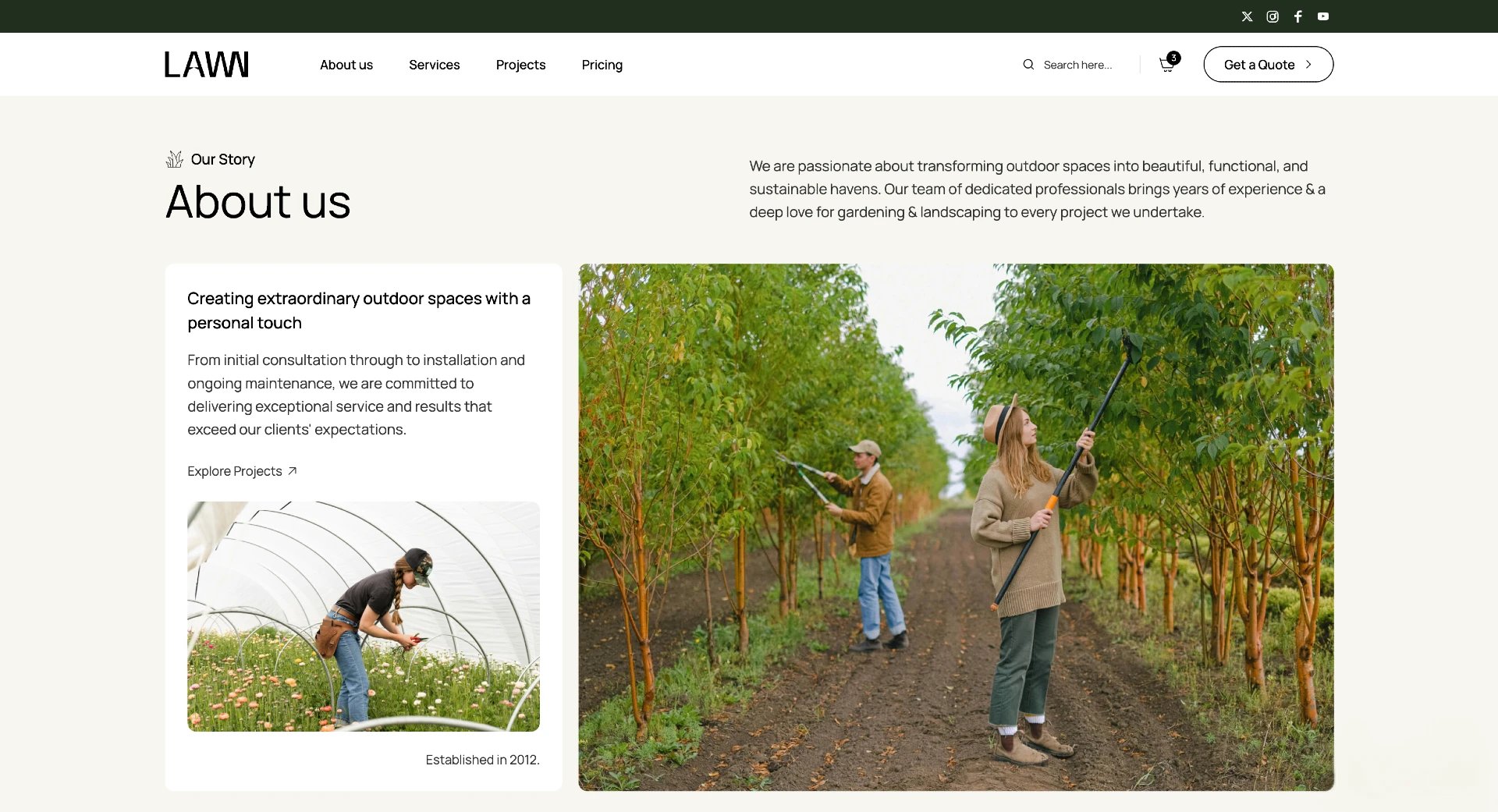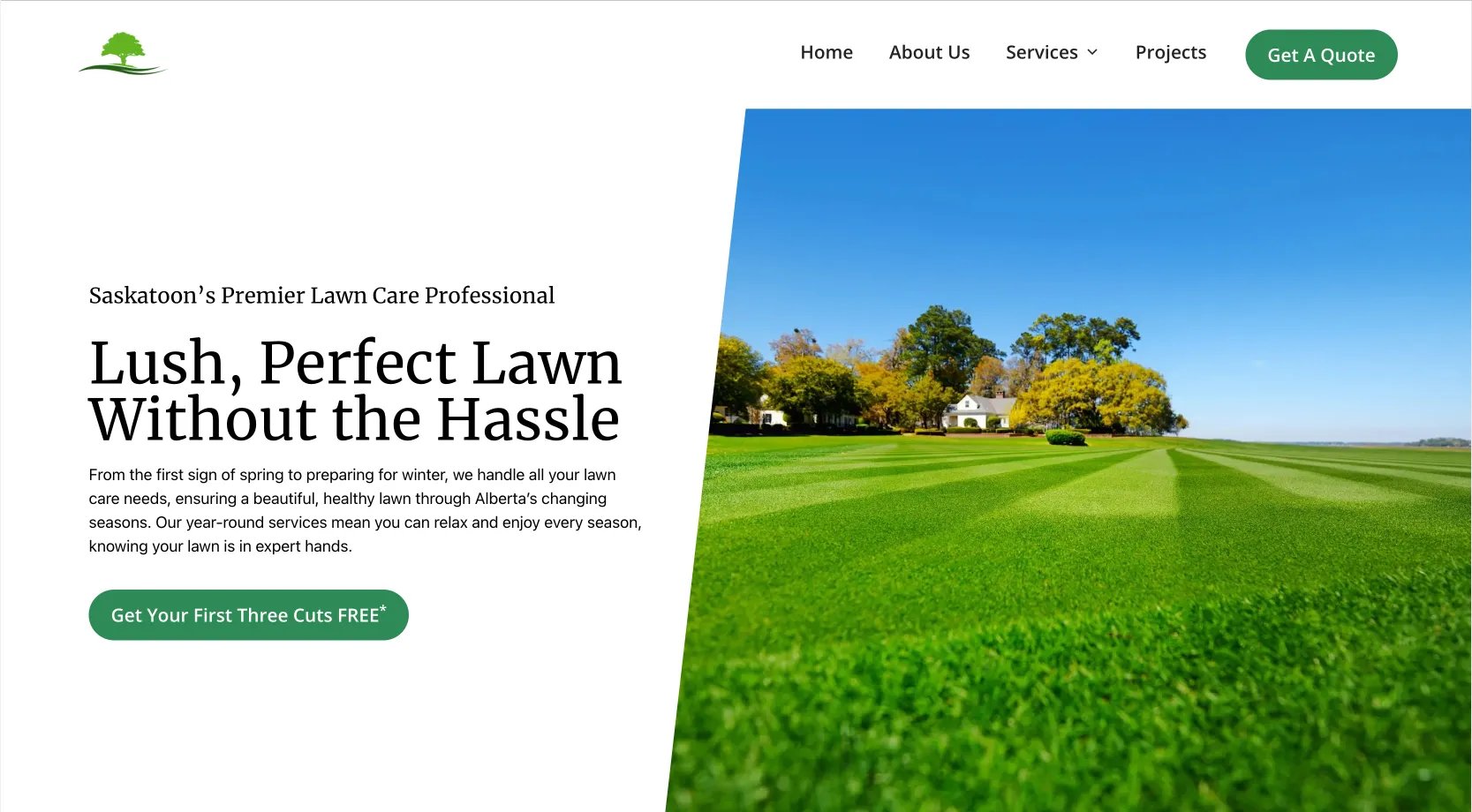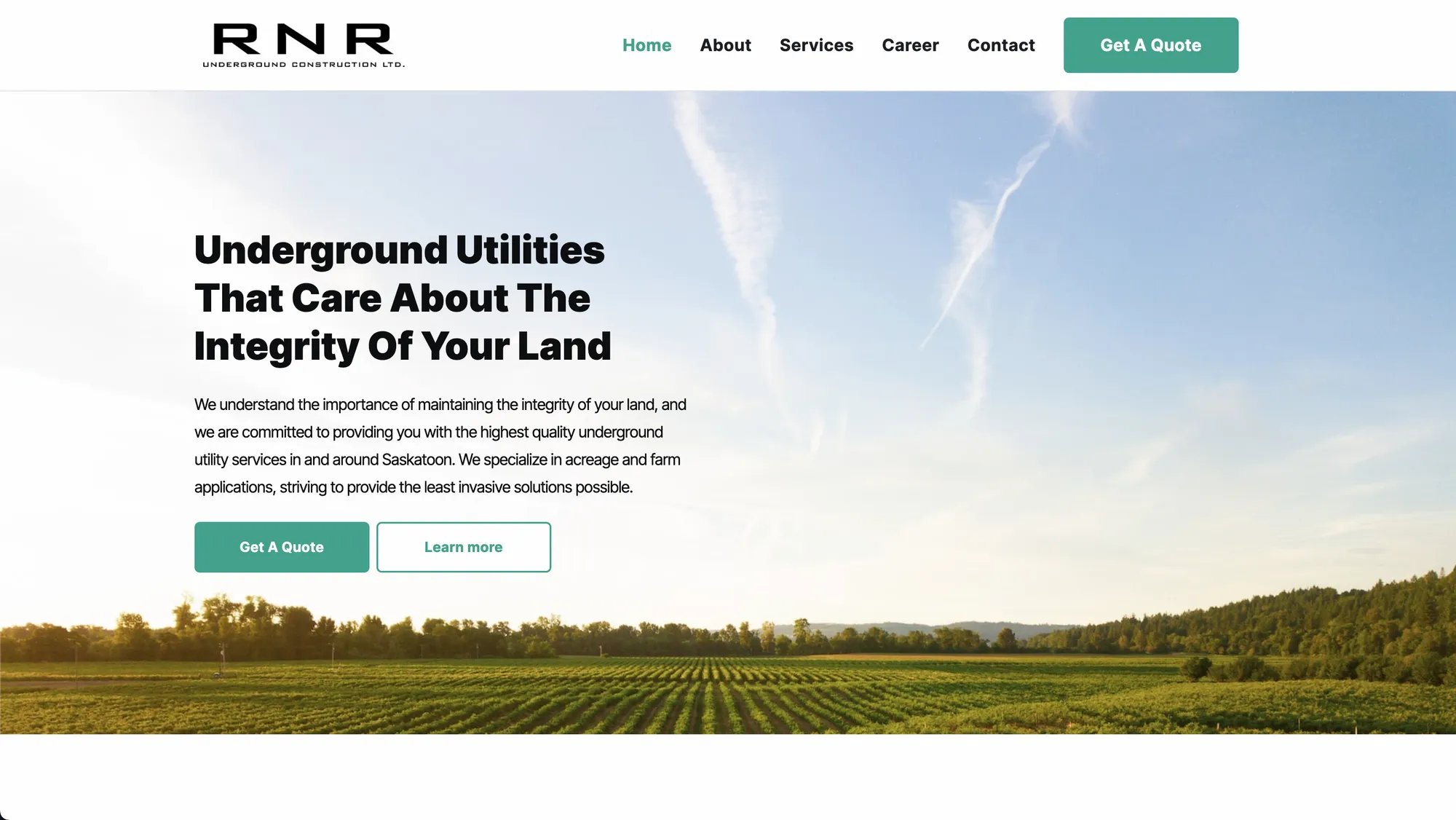Amazing Landscaping Web Design
Websites Landscapers Love—Without the Stress or High Costs
We build amazing websites for landscapers without high costs or hassle. Get a FREE website mockup in just 7 days and launch your site in less than 30 days with no big upfront fees—just one simple monthly price. Enjoy hands-free, 5-star support and a 90-Day Money-Back Guarantee.
Landscaping Websites That Drive Results
Get A New Site You Can Proud Of
Our landscaping web designs are versatile, tailored to your brand, and built to bring in leads. See how we create standout websites for lawn care and landscapers across North America.
Customer-Focused Landscaping Website Designs
A Site You Can Proud Of Without The Hassle
We Do It All
You don’t have to be a tech expert. We design and manage your site for you.
Lightning-Fast Support
Need changes? We’ve got you! Fast, friendly help whenever you need it.
Built for Success
Our sites are made to win! Trust-building and lead-generating.

Marcos Diano
Founder, Park City Landscaping and Construction Inc.
Lawn Care & Landscaping Website Costs
Simple & Transparent Pricing
Our pricing plan recognizes that a website is a living document that needs constant updates, maintenance, and support. Our plan offers complete peace of mind with no upfront costs, all-inclusive pricing, and a risk-free guarantee. Enjoy top-tier landscaping website service without hidden fees or financial burdens.
Zero Upfront Costs
We stand out in the industry by charging nothing upfront. We focus on building long-term relationships with our customers. Get a high-performing landscaping website and pay nothing for the first 30 days.
All-Inclusive Pricing
For a flat rate of $99/month, you get everything included: design, hosting, reporting, and lifetime support. No hidden fees or unexpected charges.
Risk-Free Guarantee
Experience our landscaping web design services with a 30-day free trial and no commitment. Plus, enjoy our 90-day money-back guarantee for complete peace of mind.
value $7,500
value $49/mo
value $299
value $999
value $499
value $249/yr
value $697
value $999
Why Our Subscription Model Makes Sense for Landscaping and Lawn Care Websites?
1. The Traditional Website Design Model Is Broken
Most website projects start by charging you a large fee. Then, every time you need something new, you pay more. This old way does not help landscapers or lawn care businesses. Your landscaping website might look good at first, but it will not stay fresh. The old model leaves you stuck with old content and old services that no longer show who you are today.
2. Your Website Is a Living Document
A landscaping website design should change and grow. Your website must keep up with new services, new images, and new content. Maybe you need a new homepage layout, better navigation, or a special landing page. You might try different colors or improve how visitors see your work. When your website grows with your business, it gives people a better experience and shows them that you care.
3. Special Needs of Lawn Care and Landscaping Websites
Lawn care websites and landscaping websites need to change with the seasons. Maybe you show spring planting deals in March, summer lawn care tips in July, or fall cleanup offers in October. Maybe you completed an amazing project and need that new content added to your portfolio. A good landscaping’s web design services lets you add new offers, show off recent projects, and keep your company looking active. These fresh updates keep customers interested. They see that you are ready to meet their needs right now, not last year.
4. Having a Team Always on Your Side
Instead of hiring a designer once and never seeing them again, a subscription model gives you a team that sticks around. Need a new landing page next month? Want to add more services next spring? It is all part of the service. No more big bills each time you change your website design. With a team on your side, you can update your web designs as you grow. You do not have to become a web expert like Squarespace or Wix suggest. Your job is to run your business, not learn coding.
5. Redesign Down the Line Is Included
After a few years, styles change. You may want a full redesign. With a subscription, this is no big deal. You do not pay huge fees again. The team knows your business already. They can refresh your website when the time comes. Maybe you want a new look, a different set of colors, or better navigation. Because you have a long-term plan, you stay current without starting over from scratch.
6. If You Win, We Win—A Long-Term Relationship
A subscription model ties our success to yours. We do not just sell you a website and walk away. We keep working to improve your landscaping or lawn care site. If your company does well, you stay with us. That helps us too. We both do better by helping each other. This is a better way to handle website projects—one that focuses on lasting growth, better services, and steady support instead of quick sales.
How The Design Process Works
1. Sign Up
Fill out a quick form to get started. No fuss—just the basics to kick things off.
2. Meet with A Designer
Book a short meeting with our designer to talk about your services and style. No extra fluff—just what matters.
3. Review Your Mockup
In 7 days, your custom homepage mockup will be ready to check out. Love it? Let’s keep going!
Landscaping Web Design Insights to Grow Your Business
Discover expert tips, strategies, and actionable advice to transform your landscaping website into a lead-generating powerhouse. From must-have pages to portfolio optimization, explore articles designed to help your business stand out and succeed online.
Got Questions?
About Our Landscaping Website Plans
How can you afford to charge so low when others agency charges $10K to $20K for landscaping websites?
At Supersonic Sites, we focus on building long-term partnerships rather than just making one-time sales. While other agencies may charge $10K to $20K upfront for a landscaping website, we offer a more sustainable and client-friendly pricing model. Considering the average website needs a redesign every 3 to 6 years to keep up with trends and technology, we spread the development cost over a 5-year period. This way, we become a long-term partner in your success, ensuring your website remains up-to-date and effective.
What happens if I miss a monthly payment?
We understand that unforeseen circumstances can arise. If you happen to miss a payment, don't worry. We offer a grace period to accommodate such situations. However, if more than three payments are missed consecutively, your website may go offline. Please reach out to us immediately if you face any payment issues. We're committed to working with you to find a solution that ensures your website remains active and accessible.
What happens if I cancel my plan just a few months after the website launch?
All our sites comes with a 30-Day Free Trial and a 90-Day Money Back Guarantee. So no risks for you. Our model is designed to offer you reduced upfront costs by spreading the design and development expenses over time. If you choose to cancel your plan within the first year, we kindly ask for the balance of a year's service. This approach helps us recover a portion of our initial investment in your project. Think of it like a phone contract; early discontinuation might come with a fee, ensuring fairness and sustainability for both parties. If you're considering discontinuation, please reach out to us, and we'll do our best to accommodate and work with you on a solution.
Does the monthly fee include hosting?
YES! The monthly fee covers everything.
Is there any long-term contract?
No, there are no long-term contracts. Our service is billed on a monthly or annual basis, depending on your preference. We do, however, ask for a commitment to a year of service to ensure fairness due to the initial low costs of design and development.
Are there any discounts for multiple websites or long-term commitments?
We value loyalty and commitment. If you're considering multiple websites or a long-term partnership, please reach out to our team to discuss potential discounts and tailored arrangements.
Get a FREE Landscaping Website Mockup in 7 days
No risk. No upfront costs. Just a custom-designed lawn care or landscaping website mockup done in 7 days completely free.





.webp)
.webp)
